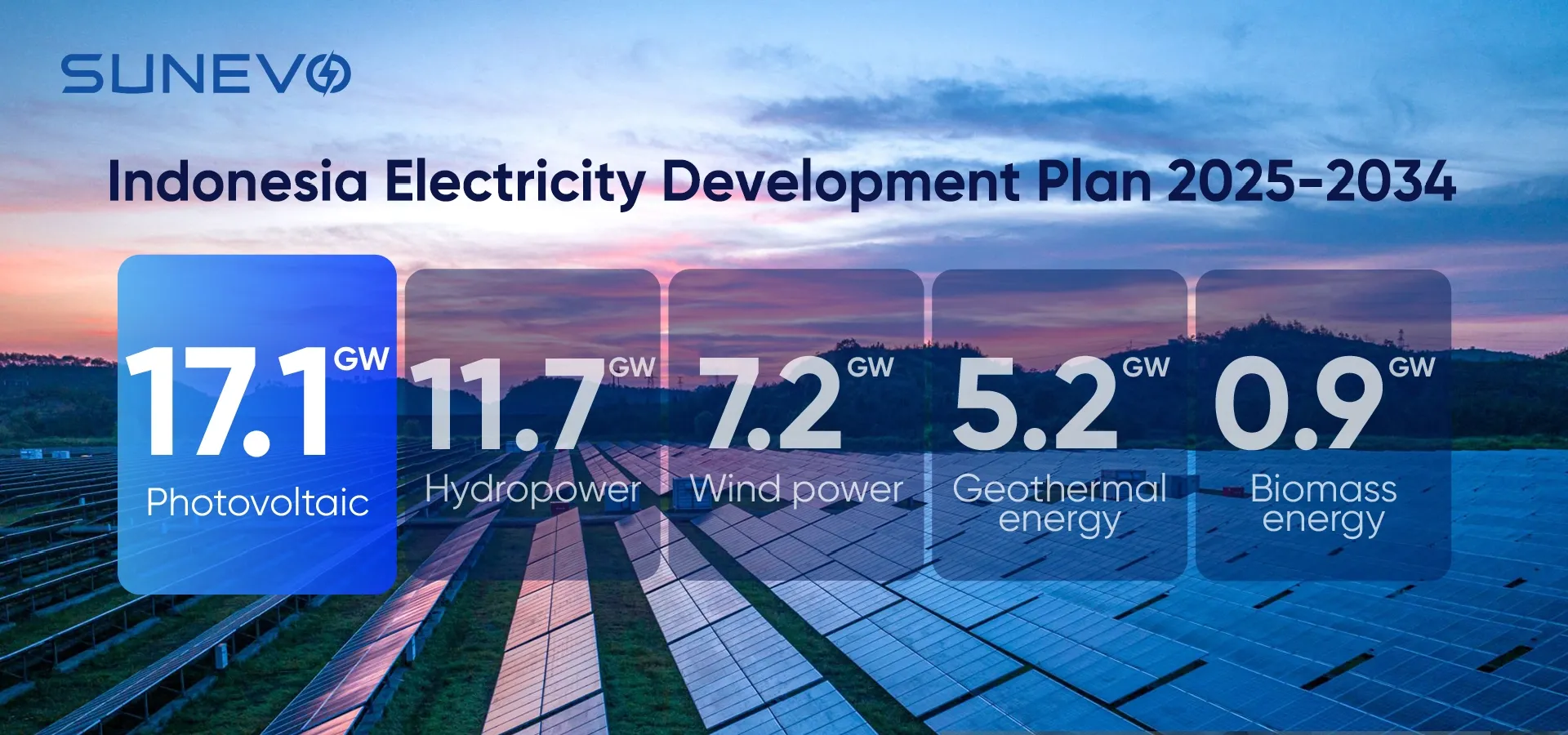
Indonesia's 2025-2034 Power Development Plan: At least 17GW of photovoltaic capacity will be added in the next 10 years
The Indonesian government recently officially passed the "2025-2034 Power Supply Business Plan" (RUPTL), which clearly stated that it will add 69.5GW of power generation capacity in the next ten years, of which 42.6GW will come from renewable energy, including 17.1GW of photovoltaic power generation capacity.
According to data from the International Renewable Energy Agency (IRENA), by the end of 2024, Indonesia's total installed capacity of renewable energy in operation was 14.3GW, of which photovoltaics accounted for only 815MW.
Advance in stages, still relying on fossil energy in the early stage
Indonesian Minister of Energy and Mineral Resources Bahlil Lahadalia said at a press conference that the plan was formulated by the state-owned power company PTPLN and will be implemented in two stages:
2025-2029: 9.2GW of new natural gas power generation, 12.2GW of new renewable energy installed capacity (EnergiBaruTerbarukan, including new energy such as photovoltaic, wind power, nuclear power, hydropower, biomass energy, etc.), 3GW of energy storage (including batteries and pumped storage), 3.5GW of coal-fired power plants;
2030-2034: Mainly deploy renewable energy, including 17.1GW photovoltaic, 7.2GW wind power, 5.2GW geothermal, 11.7GW hydropower, 900MW biomass, and 2 small nuclear power units of 250MW each.
Lahadalia reiterated Indonesia's commitment to the Paris Agreement and said it would strive to achieve the net zero emission target by 2060.
The investment scale is 185.5 billion US dollars, and IPP will dominate nearly 70%
According to the plan, power projects in the next ten years will drive a total investment of about 296.74 trillion rupiah (about 185.5 billion US dollars), of which about 73% will be invested and constructed by independent power producers (IPPs), and the rest will be responsible for the PTPLN Group.
To support the new installed capacity, Indonesia will also build nearly 48,000 kilometers of transmission lines and 108,000MVA substation capacity grid facilities.
The new plan's energy transformation speed is slower than previously promised, which has aroused external doubts
International law firm A&O Shearman pointed out that achieving the 17.1GW photovoltaic target will face large-scale land demand (ground power stations usually require 1MW to 1 hectare of land). Floating photovoltaic projects are also part of the plan. The country has up to 20% of its water resources with the potential to install photovoltaic power stations.
However, the plan has also aroused external doubts. The Jakarta Post pointed out in an editorial that RUPTL2025-2034 "may become a 'missed opportunity' for Indonesia's sustainable development", saying that the plan focuses on fossil energy in the early stage and promotes renewable energy projects in the later stage, and whether the latter stage can be implemented depends on whether the growth of electricity demand meets expectations. The editorial also pointed out: "If renewable energy projects are at risk of curtailment or inefficient use due to the continued operation of contracted coal-fired power plants at high loads, we should expect this to bring uncertainty to investors developing renewable energy projects in Indonesia in the coming years."
The Institute for Basic Services Reform (IESR), an Indonesian energy transition think tank, also expressed dissatisfaction with the plan's large number of coal-fired, natural gas and nuclear power installed capacity targets. IESR pointed out that the target set by RUPTL is far lower than Indonesia's commitment to achieve 56GW of renewable energy installed capacity by 2030 in the Just Energy Transition Partnership (JETP), and is also inconsistent with the requirements of the Paris Agreement.
Fabby Tumiwa, executive director of IESR, warned: "One of the risks facing Indonesia's energy transition is the slowness of PLN in bidding for renewable energy power plants and the lengthy negotiations on power purchase and sale agreements (PPAs), which will affect the implementation of renewable energy projects and threaten future power security." He suggested that the government should monitor the implementation of RUPTL and support PLN to achieve its goals by improving policies and regulations, reasonable electricity price mechanisms and strengthening the bidding system. Indonesian President Prabowo Subianto promised at the 2024 G20 Brazil Summit that by 2040, more than 75GW of renewable energy capacity will be built, including 27GW of photovoltaics, to achieve the national goal of achieving net zero emissions by 2050.